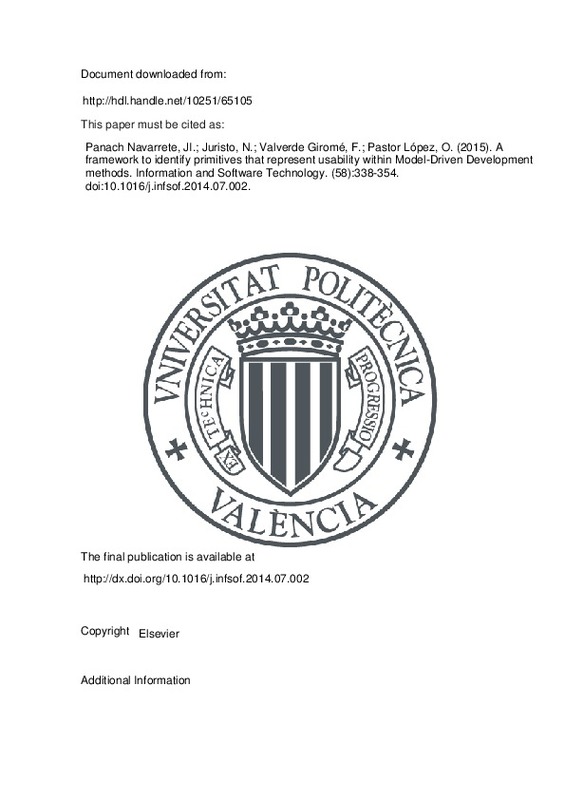JavaScript is disabled for your browser. Some features of this site may not work without it.
Buscar en RiuNet
Listar
Mi cuenta
Estadísticas
Ayuda RiuNet
Admin. UPV
A framework to identify primitives that represent usability within Model-Driven Development methods
Mostrar el registro completo del ítem
Panach Navarrete, JI.; Juristo, N.; Valverde Giromé, F.; Pastor López, O. (2015). A framework to identify primitives that represent usability within Model-Driven Development methods. Information and Software Technology. (58):338-354. https://doi.org/10.1016/j.infsof.2014.07.002
Por favor, use este identificador para citar o enlazar este ítem: http://hdl.handle.net/10251/65105
Ficheros en el ítem
Metadatos del ítem
| Título: | A framework to identify primitives that represent usability within Model-Driven Development methods | |
| Autor: | Panach Navarrete, José Ignacio Juristo, Natalia Valverde Giromé, Francisco | |
| Entidad UPV: |
|
|
| Fecha difusión: |
|
|
| Resumen: |
Context: Nowadays, there are sound methods and tools which implement the Model-Driven Development approach (MDD) satisfactorily. However, MDD approaches focus on representing and generating code that represents functionality, ...[+]
|
|
| Palabras clave: |
|
|
| Derechos de uso: | Reserva de todos los derechos | |
| Fuente: |
|
|
| DOI: |
|
|
| Editorial: |
|
|
| Versión del editor: | http://dx.doi.org/10.1016/j.infsof.2014.07.002 | |
| Código del Proyecto: |
|
|
| Agradecimientos: |
This work was developed with the support of the Spanish Ministry of Science and Innovation Project SMART ADAPT (TIN201342981-P), TIN2011-23216 and was co-financed by ERDF. It also has the support of Generalitat Valenciana-funded ...[+]
|
|
| Tipo: |
|







![[Cerrado]](/themes/UPV/images/candado.png)


